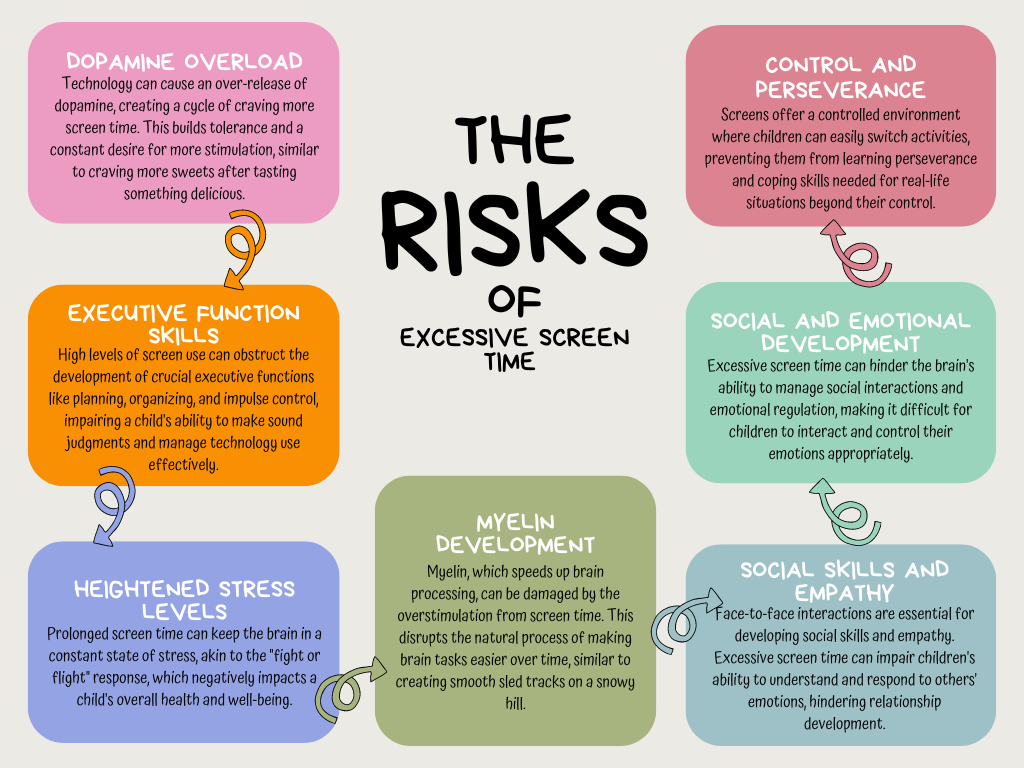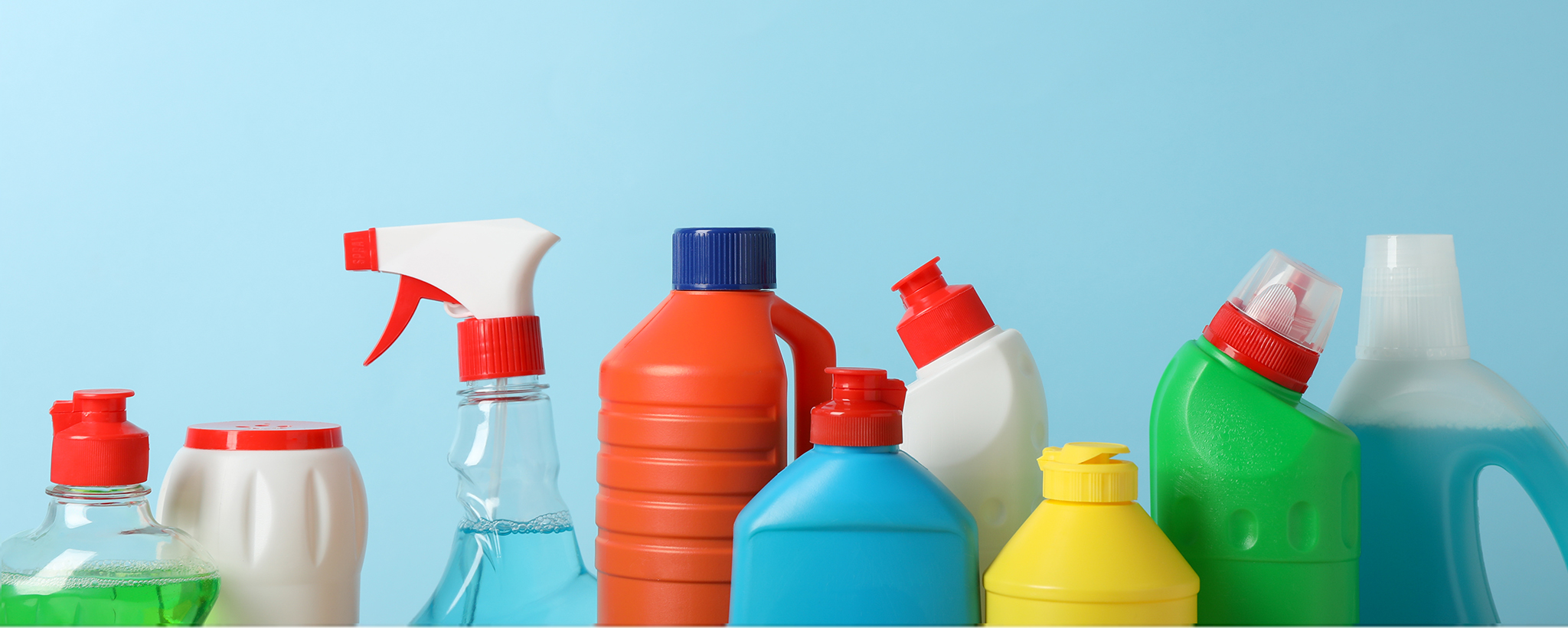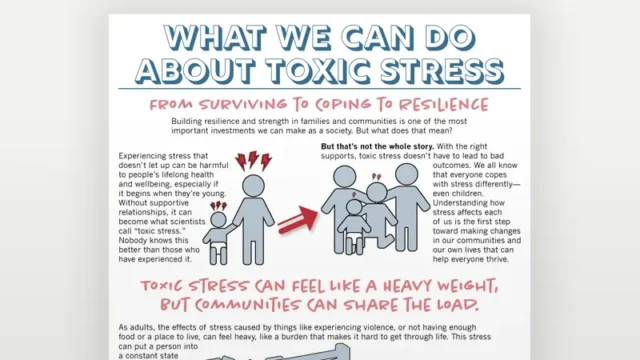
As parents, we all want our children to do well. We work to create spaces that nourish their growth, support their development, and mold them into healthy, happy people. However, children from 3 to 14 years old in the current world face a lot of challenges that might affect their proper growth.
Studies have found that the first few years of a child’s life are a critical period of growth for brain development, physical development, and emotional health. What they see (or don’t) in those formative years can have lasting impacts well into adulthood.
Let’s explore five key things you should keep your children away from to support their optimal growth and development.
Table of Contents
1. Excessive Screen Time

All this led us to being and evolving with screens, which are present around us, for example: cell phones, computers, tablets, televisions, etc. While technology has its advantages, too much screen time can prevent a child from developing to their greatest potential.
How It Affects Development:
- Brain Development: Studies have shown that excessive screen use can limit what a child observes and experiences in everyday life, which is important because it can create a kind of “tunnel vision” that hampers the whole brain development process.
- Social Skills: Screen-addicted children miss out on face-to-face interactions, which are imperative to developing empathy and social competence.
- Sleep Disruption: Blue light from screens can disturb melatonin production, making it harder for a child to fall asleep, and disrupt sleep cycles.
- Attention span: Studies suggest that children with extensive screen time are more likely to have difficulty focusing and may develop attention problems.
What You Can Do:
- Establish clear screen time limits based on age (generally no more than 1 hour daily for children 3-5 years and 2 hours for older children)
- Create screen-free zones in your home, particularly in bedrooms
- Model healthy screen habits yourself
- Encourage alternative activities like reading, outdoor play, and creative projects
So much so that multiple studies have found children who spent two to three hours on screens had a greater chance of being behaviorally challenged, having weak vocabulary or experiencing developmental delays in communication and fine-motor skills. Source
2. Toxic Chemicals in the Home

Children are born as curious explorers, yet many everyday household products contain harmful chemicals that are not safe for a developing body and brain.
How It Affects Development:

- Neurodevelopment: Low-dose exposures to pesticides, plasticizers and other chemicals can interfere with brain development and functioning.
- Immune System: Chemical exposures at vital windows of development can change immune system function.
- Hormonal Balance: Many household chemicals are endocrine disruptors, which means they can interfere with normal hormonal development.
- Chemical Effects on Physical Development: Some may play a role in proper physical development and growth patterns.
Common Sources of Toxic Exposure:
- Products for conventional cleaning
- Fungicides & fungistatic agents (thesis)
- BPA and phthalates in plastic containers
- Flame retardants in electronics and furniture
- Synthetic fragrances (air fresheners and scented products)

What You Can Do:
- Use natural, non-toxic—non-toxic we repeat—cleaning products
- Keep all chemicals in locked cabinets out of children’s reach
- Use fragrance-free products — or none at all
- Avoid plastic food containers whenever you can.
- Children must wash their hands regularly, particularly before meals
Children consume, inhale and absorb more food, water and air, pound for pound, than adults, which makes them more narrowly threatened by toxic chemicals. Lead and mercury are well-known neurotoxins, but even some common household chemicals can be risky. Source
3. Highly Processed Foods

The modern diet is often devoid of nutrition, consisting of ultra-processed foods that are convenient but not nourishing. These can have a dramatic effect on a child noticing develop, and set up an unhealthy relationship with food for life.
How It Affects Development:
- Oral Health: Processed foods, high in sugar, contribute to tooth decay and cavities.
- Impacts Physical Growth: Eating diets rich in processed foods often lack key nutrients necessary for appropriate physical development.
- Behavioral Issues: Research has associated the intake of highly processed foods with additional behavioral issues and a lower attention span.
- Metabolic Health: The earlier children are exposed to ultra-processed foods, the higher the risk of obesity, diabetes and other metabolic disorders.

Common Ultra-Processed Foods to Limit:
- Sugary breakfast cereals
- Fast food
- Packaged snacks and cookies
- Sugary drinks and sodas
- Processed meats (hot dogs, chicken nuggets)
- Frozen dinners loaded with salt and preservatives
What You Can Do:
- Focus on whole foods, such as fruits, vegetables, whole grains and lean proteins
- When you can, eat at home
- Education & Food Teach Kids About Nutrition And Be Involved In Meal Prep
- Fewer ingredients mean less processedFood labels reveal all you need to know about what is in food.
- However, if you’re going to allow treats it should be infrequently.
Children who ate more ultra-processed foods had less successful locomotor skills than children who ate less of these foods, research has found. Furthermore, ultra-processed food consumption has been associated with class I and II obesity, increased body fat percentage, and increased blood sugar levels in children. Source
4. Lack of Free, Unstructured Play

In a culture obsessed with achievement, many children lead hyper-scheduled lives with little time for free play. But playing unstructured is vital for proper development.
How It Affects Development:
- Creativity and Problem-Solving: Through free play, this encourages children to develop creative thinking and effective problem-solving skills when they invent their own games and stories.
- Executive Function: As they play without structure, they learn how to plan, organize and make decisions.
- Social development: Playing freely with others teaches negotiation, cooperation and conflict resolution.
- Emotion Regulation: Play experiences help children learn how to regulate emotions and build resilience.
- Physical Development: Physical play helps develop motor skills, coordination, and overall fitness.

What You Can Do:
- Carve out a daily time slot for free play
- Introduce simple, open-ended playthings that inspire imagination
- Make spaces indoors and outdoors available that are safe for exploration.
- Do not over-schedule with too many structured activities
- Expose children to appropriate risk through play to develop confidence
- Participate from time to time, but allow the children to direct the play
Long term effects of play deprivation in early childhood development manifest as isolation, depression and lack of self-control and poor resilience. Free play allows children to investigate their world at their own pace and encourages creativity and imagination. Source
5. Chronic Stress and Pressure

Although some stress is a normal facet of life, chronic or toxic stress can have devastating adverse effects on a child’s development, particularly during sensitive periods of brain development.
How It Affects Development:
- Brain Structure: Exposure to toxic stress can lead to physical changes in the brain, particularly within areas that are critical for learning and memory.
- Immune System: Chronic stress negatively impacts the immune system, leaving children vulnerable to disease.
- Emotional Health: Chronic stress raises the risk for anxiety, depression and other mental health problems.
- Physical growth — Chronic stress is a well-documented inhibitor of physical growth.
- The Findings: Stress gets under the skinBehavior Regulation: Kids facing chronic stress often have problems behaving and regulating their emotions.
Common Sources of Toxic Stress:

- Pressure to Be Academic & Overscheduling
- Family strife or instability
- Bullying
- Too much performance expectation
- They’re poor or have economic instability
- Violence or trauma — exposure to violence or traumatic events
What You Can Do:
- [4] Build stable, supportive home environments
- Speak with gratitude and acknowledge your kids
- Teach and model healthy coping approaches
- Set realistic expectations based on your child’s developmental stage
- If your child is displaying signs of extreme stress, seek professional help
- Get enough sleep, eat well and get some exercise, all of which help buffer stress
The result of extended stress response is that a child’s nervous system, immune system, and even DNA can be changed. Toxic stress causes the fear centers of the brain to significantly increase in size, and the child can develop symptoms very similar to post-traumatic stress disorder. Source

Conclusion
This chronic form of stress response can alter a child’s nervous system, immune system, and even DNA. Toxic stress leads to the significant overdevelopment of the fear centers of the brain, and the child can show those symptoms very similar to post-traumatic stress disorder. Source
Your child’s formative years are precious but fleeting. If you can be aware of these five areas and work to manage their potential detrimental effects, you can help create an environment in which your child’s growth and development.
What actions did you take to create a healthier environment for your child? Tell us about your waster experiences and tips in the comments!

Visit Our Home page for Our latest blog Here : luxira.in



